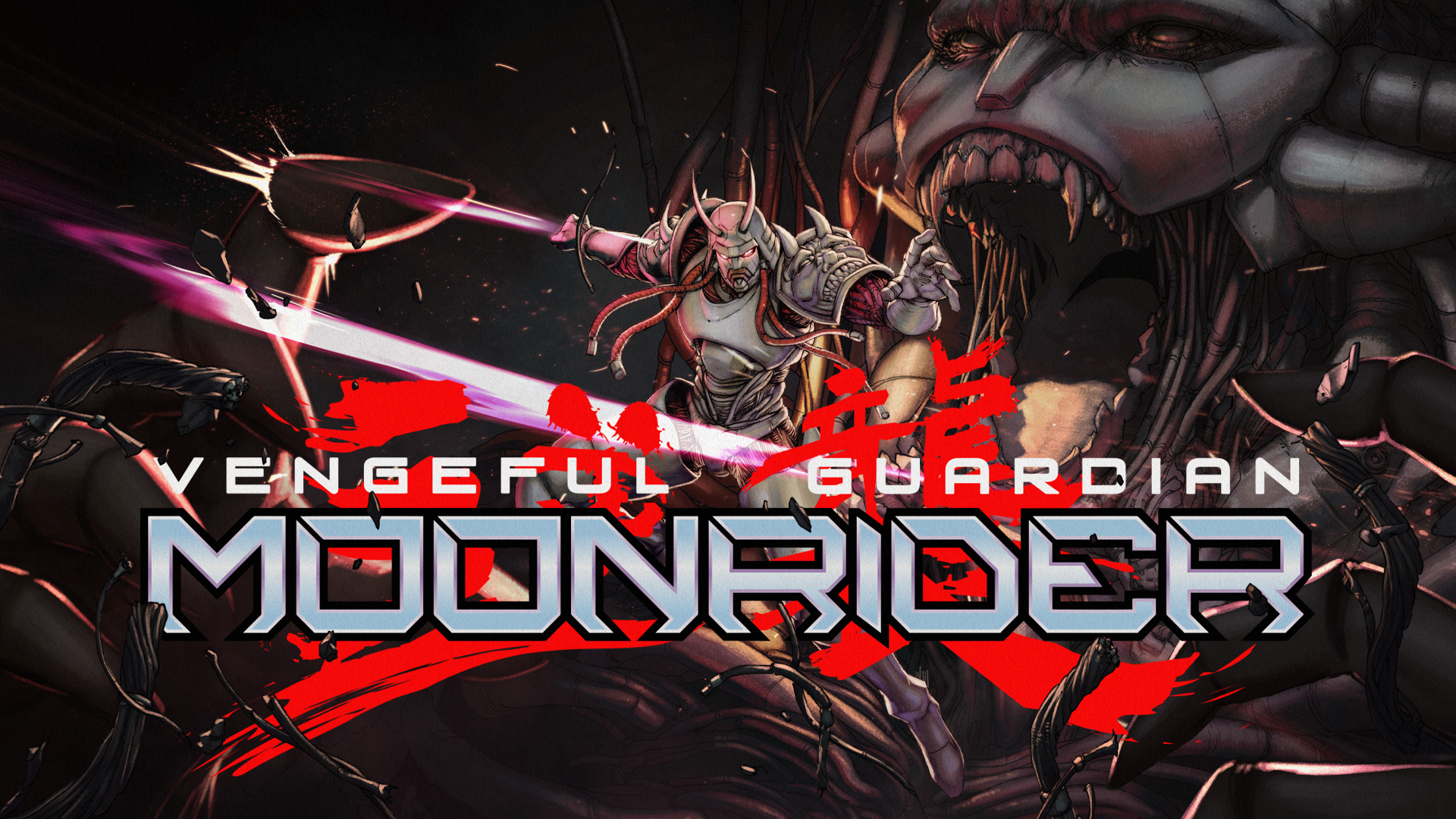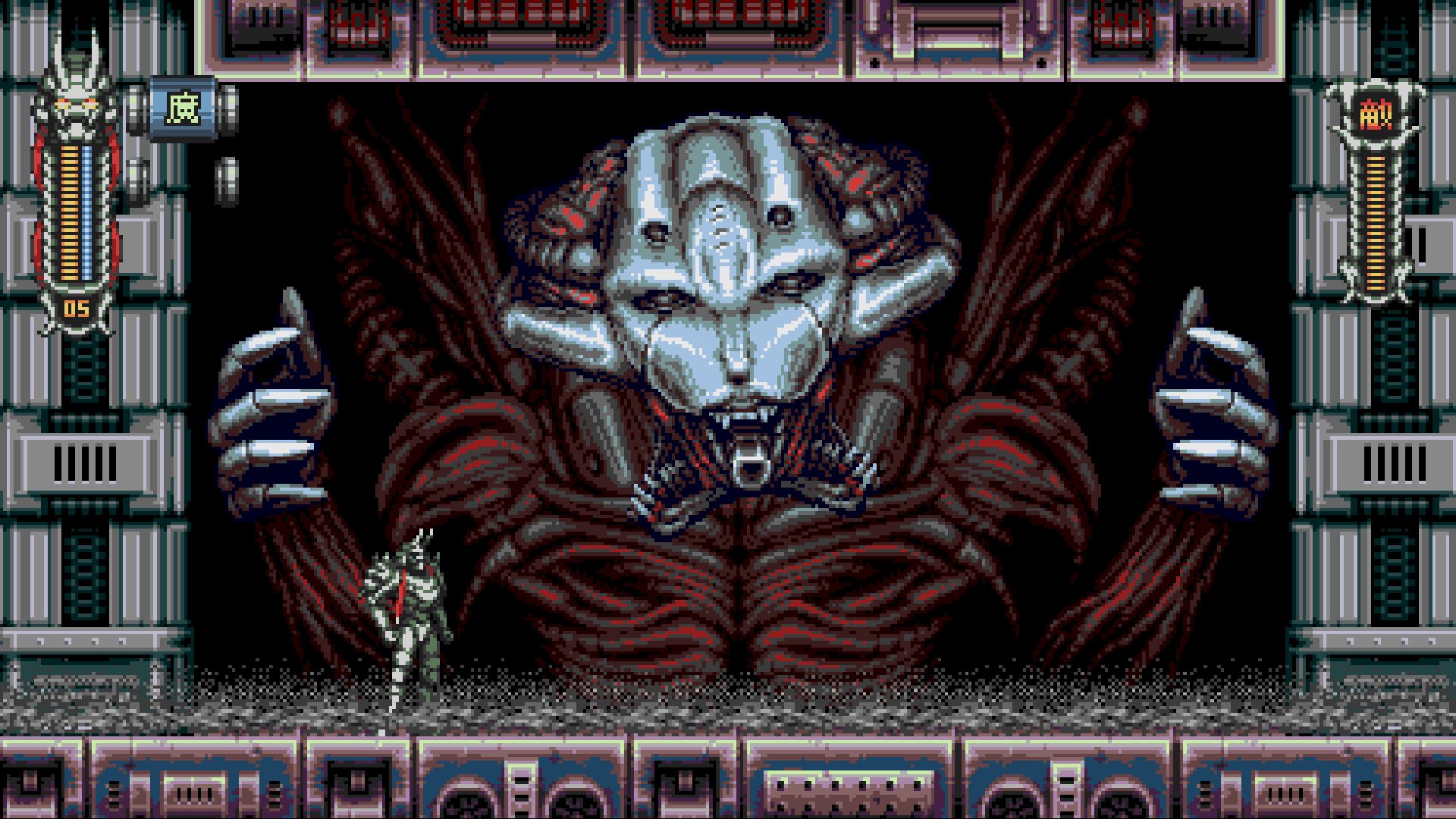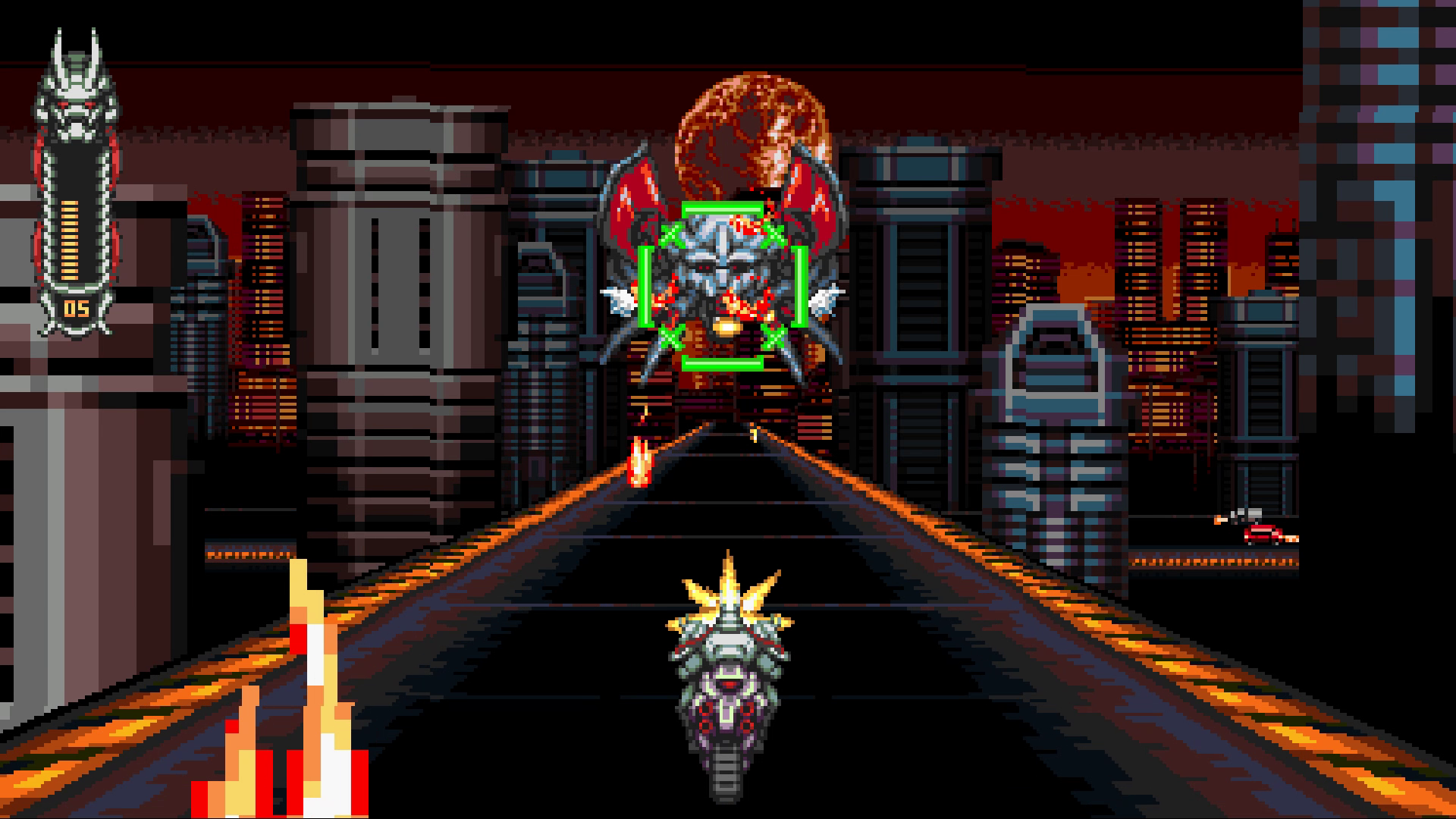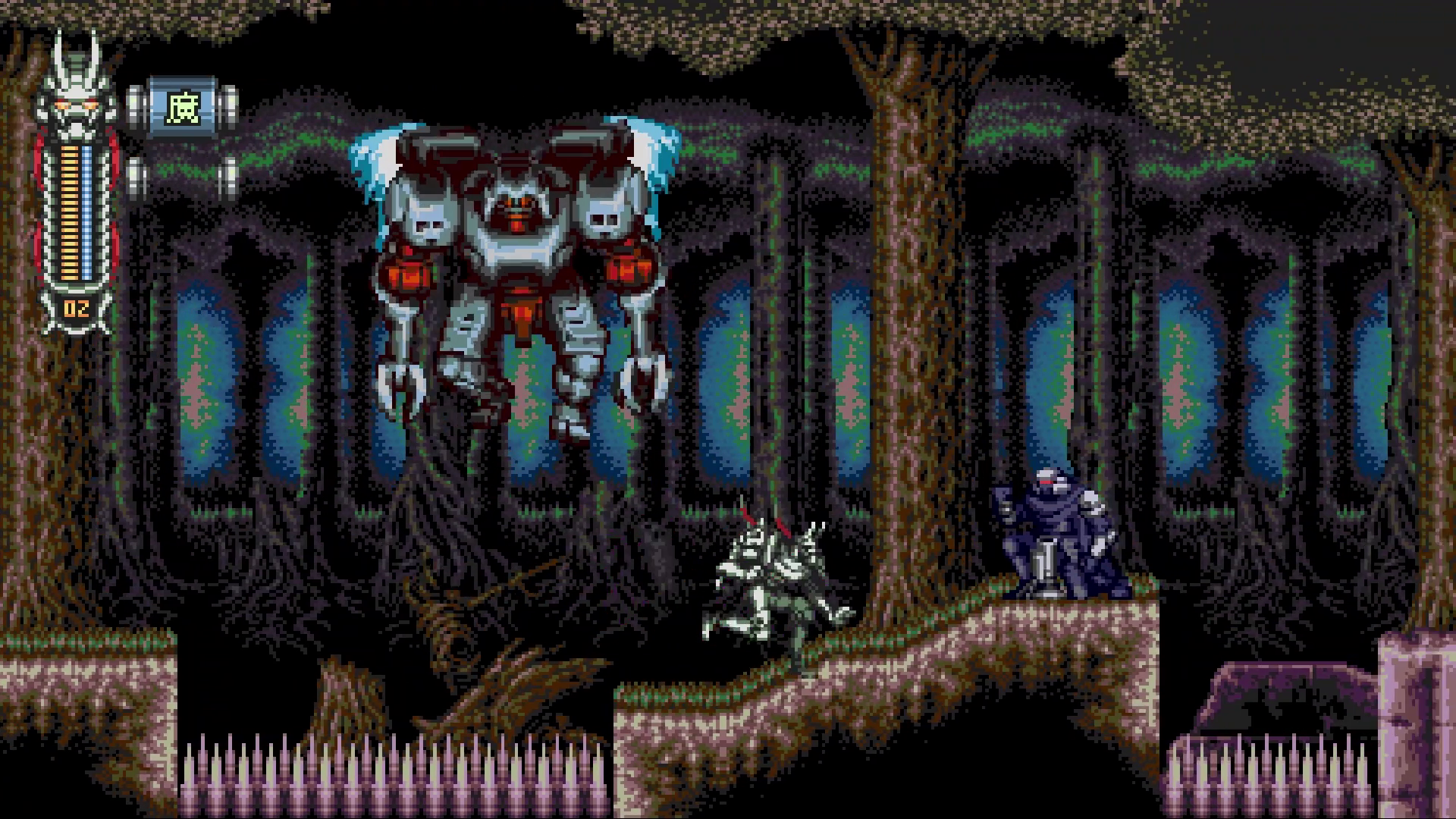Vengeful Guardian: Moonrider is a throwback to 90’s action-platformer games that will appeal to those looking for a challenging nostalgia trip.
Developed by two-man team JoyMasher and published by The Arcade Crew, Vengeful Guardian: Moonrider is a retro-inspired action platformer that sees players don the mantle of the titular super solider and battle through 8 stages of side-scrolling fury in an attempt to overthrow the despotic regime of a cyberpunk-esque dystopia. JoyMasher has devoted every one of its projects to recapturing the glory of action platformers from the SNES era, and this entry is no exception. The game is entirely focused on delivering tightly crafted, harrowing levels to complete that rely entirely on precise motor skills and lots of retries. The result is a nostalgic, challenging, and ultimately rewarding experience for those wanting to relive the era of classic ’90s gaming.
JoyMasher is devoted to crafting highly-refined adaptations of classic-styled, unforgiving action platformers. While this genre of game has become a little bit more niche in the past few decades, it still demands a cult following, and Vengeful Guardian: Moonrider certainly delivers on that front. The game immaculately mimics the sound, style, and gameplay of old-school platformers. The flow of the game is balanced between incredibly quick and responsive combat alongside platform elements designed to slow the player down and cause them to carefully plan every movement in order to get the best possible time.
Vengeful Guardian: Moonrider is a game designed for speedrunning, as it holds a record of completion times alongside a letter grade for each stage the player has completed. Thus, while only consisting of 8 overall stages, this game has high replay value, especially for perfectionists. The gameplay design, while not entirely original, is a nearly flawless balance between challenging combat and carefully timed platforming. The only major issues with the gameplay manifest in certain boss battles.
While all the end-stage final bosses are excellently designed and engaging, some of the mid-level bosses feel redundant and sluggish, breaking the flow of gameplay. These bosses feel more tedious than truly difficult with repetitive attack patterns and massive (invisible) health bars. While certain bosses can be tackled with different strategies, most are immune to creative solutions due to extended periods of invincibility which overlap with their devastating attacks. This unfortunately locks the player into slow and repetitive strategies that eat up precious amounts of time during speed runs.
While Vengeful Guardian: Moonrider is very linear compared to other Metroidvania titles of its kind, there are still collectibles to be found on every level, some of which are hidden fairly well. These collectibles come in the form of power modules that gives the player certain gameplay buffs or even aesthetic options. These power modules stay permanently available, even if the player dies, and two can be equipped at a time. These also, alongside special moves awarded after completing stages, offer the only bit of strategy for the game outside purely mechanical techniques. Furthermore, while the level variety is limited, there are pleasantly surprising breaks from the traditional side-scrolling with sections, like a bike chase in Iwondonilo City. While these diversions from the central gameplay are not particularly detailed or difficult, they offer a nice change of pace from the standard gameplay and keep the game fresh throughout.
Just as Vengeful Guardian: Moonrider is a game designed with a specific playstyle in mind, it is also a game designed with a specific playerbase in mind. Some players, especially those who are not as familiar with the genre, may have a hard time adjusting to the pure technical challenge that the game presents. While there are no difficulty settings, the player is offered several power modules with defensive capabilities, one of which is given to the player after their first game over. This module decreases the overall amount of damage taken, but also caps the max level rank at a “B” grade.
Stylistically, this is thoroughly a 16-bit game. The pixel graphics and the enemy models and map designs are intentionally reminiscent of 90s futuristic dystopias like Shadowrun or Robocop. There’s even an optional CRT TV screen effect that looks convincingly vintage. The music and audio design, like the rest of the game, is faithful to the retro vision. The loud, crunchy death noises are sufficiently lo-fi, and the synth arpeggios and muddled drum beats match the intensely nostalgic vibe of the game. The actual story and dialogue are paper-thin. While, admittedly, this is not the genre of game that usually relies on a deep or complicated plot, between brief and stilted dialogues or the disjointed post-level cutscenes, the story seems more of a missed opportunity and distraction from the well-designed and stylized world of Vengeful Guardian: Moonrider.
Overall, Vengeful Guardian: Moonrider is a stellar homage to 16-bit action platformers of the 1990s. Every detail in the game successfully recreates the feeling of playing an SNES side-scroller that demands high levels of concentration and technical skill. Aside from a few boss fights, the gameplay feels quick, fast, and exciting, despite being intentionally dated mechanically. The fact that this game intentionally limits itself to an imitation of older games might bother some players, and while more effort could have gone into expanding certain areas of the game, Vengeful Guardian: Moonrider stands on its pitch-perfect aesthetic and gameplay design and will most certainly appeal to die-hard fans of old school action games.
Vengeful Guardian: Moonrider launches January 12th for PC, Nintendo Switch, Playstation 4, and Playstation 5. Game Rant was provided a PC code for this review.




